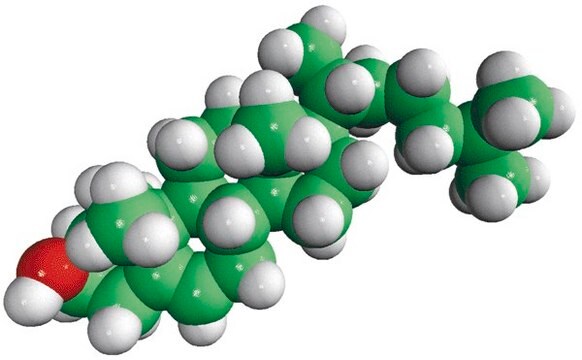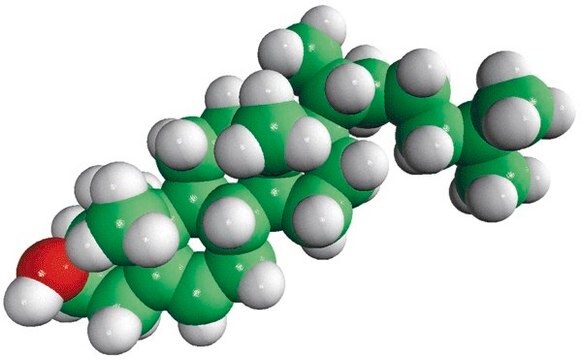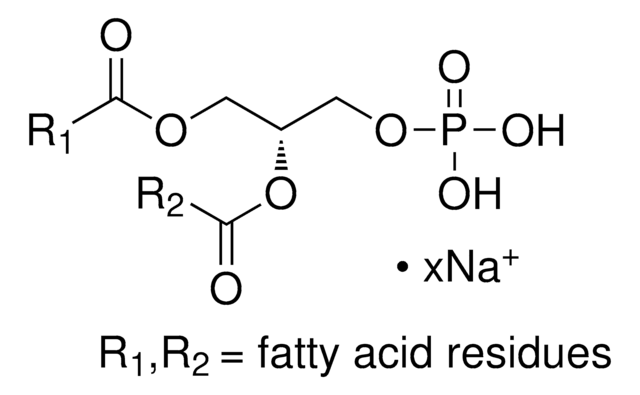C1231
Colesterolo
SyntheChol®
Produzione farmaceutica
Sinonimo/i:
3β-idrossi-5-colestene, 5-colestene-3β-olo
About This Item
Prodotti consigliati
Origine biologica
synthetic
Livello qualitativo
agenzia
JP
NF
Ph. Eur.
Saggio
≥98%
Stato
crystals
P. ebollizione
360 °C (lit.)
Punto di fusione
147-149 °C (lit.)
Densità
1.067 g/mL at 25 °C (lit.)
Compatibilità
suitable for manufacturing use
Condizioni di spedizione
dry ice
Temperatura di conservazione
−20°C (−15°C to −25°C)
Stringa SMILE
CC(C)CCC[C@@H](C)[C@H]1CC[C@H]2[C@@H]3CC=C4C[C@@H](O)CC[C@]4(C)[C@H]3CC[C@]12C
InChI
1S/C27H46O/c1-18(2)7-6-8-19(3)23-11-12-24-22-10-9-20-17-21(28)13-15-26(20,4)25(22)14-16-27(23,24)5/h9,18-19,21-25,28H,6-8,10-17H2,1-5H3/t19-,21+,22+,23-,24+,25+,26+,27-/m1/s1
HVYWMOMLDIMFJA-DPAQBDIFSA-N
Informazioni sul gene
human ... POLA1(5422) , TOP2A(7153)
rat ... Ar(24208) , Polb(29240)
Cerchi prodotti simili? Visita Guida al confronto tra prodotti
Azioni biochim/fisiol
Nota sulla preparazione
Note legali
Codice della classe di stoccaggio
11 - Combustible Solids
Classe di pericolosità dell'acqua (WGK)
WGK 1
Punto d’infiammabilità (°F)
Not applicable
Punto d’infiammabilità (°C)
Not applicable
Dispositivi di protezione individuale
Eyeshields, Gloves, type N95 (US)
Scegli una delle versioni più recenti:
Possiedi già questo prodotto?
I documenti relativi ai prodotti acquistati recentemente sono disponibili nell’Archivio dei documenti.
I clienti hanno visto anche
Il team dei nostri ricercatori vanta grande esperienza in tutte le aree della ricerca quali Life Science, scienza dei materiali, sintesi chimica, cromatografia, discipline analitiche, ecc..
Contatta l'Assistenza Tecnica.






